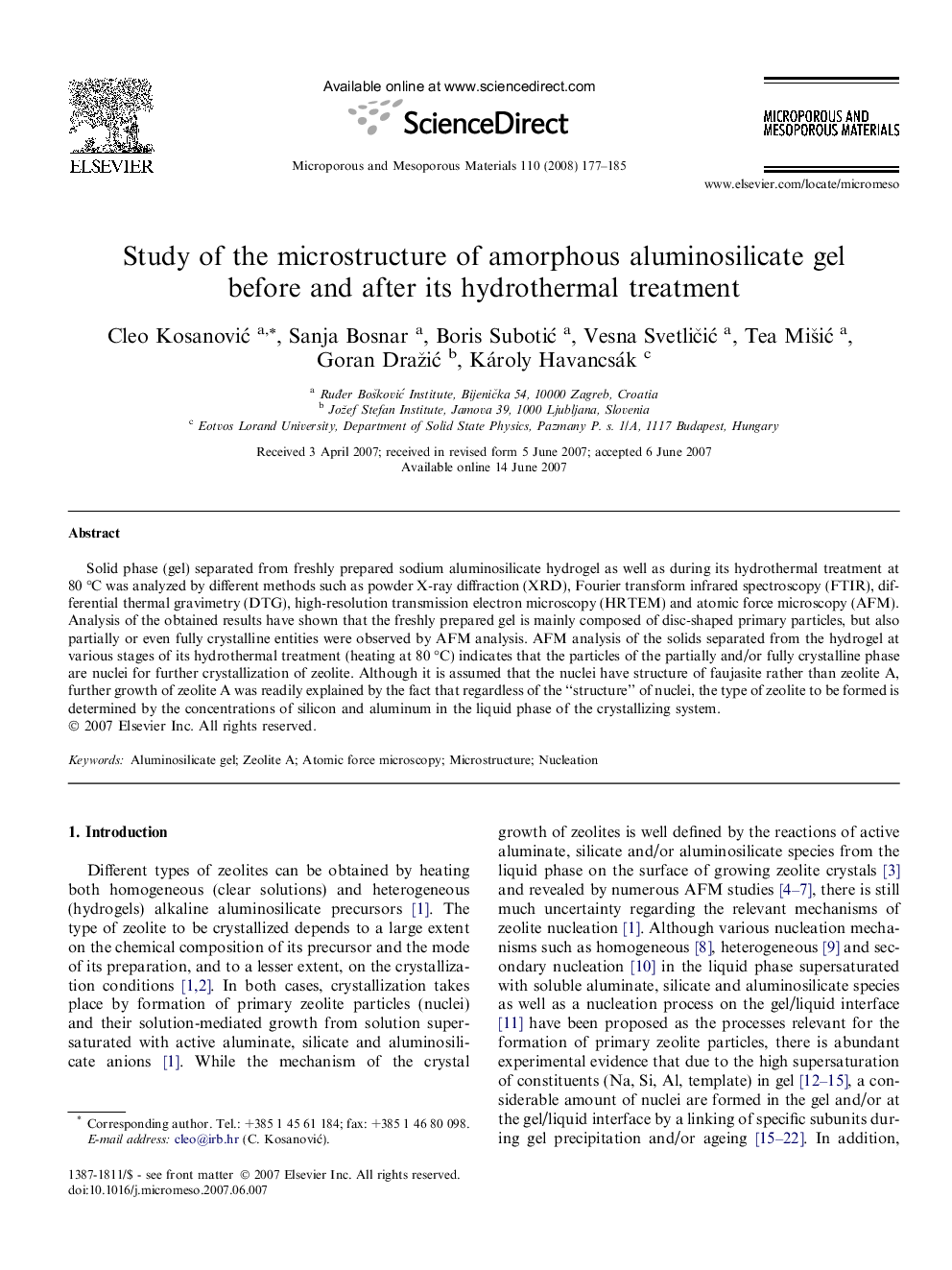| Article ID | Journal | Published Year | Pages | File Type |
|---|---|---|---|---|
| 76354 | Microporous and Mesoporous Materials | 2008 | 9 Pages |
Solid phase (gel) separated from freshly prepared sodium aluminosilicate hydrogel as well as during its hydrothermal treatment at 80 °C was analyzed by different methods such as powder X-ray diffraction (XRD), Fourier transform infrared spectroscopy (FTIR), differential thermal gravimetry (DTG), high-resolution transmission electron microscopy (HRTEM) and atomic force microscopy (AFM). Analysis of the obtained results have shown that the freshly prepared gel is mainly composed of disc-shaped primary particles, but also partially or even fully crystalline entities were observed by AFM analysis. AFM analysis of the solids separated from the hydrogel at various stages of its hydrothermal treatment (heating at 80 °C) indicates that the particles of the partially and/or fully crystalline phase are nuclei for further crystallization of zeolite. Although it is assumed that the nuclei have structure of faujasite rather than zeolite A, further growth of zeolite A was readily explained by the fact that regardless of the “structure” of nuclei, the type of zeolite to be formed is determined by the concentrations of silicon and aluminum in the liquid phase of the crystallizing system.
